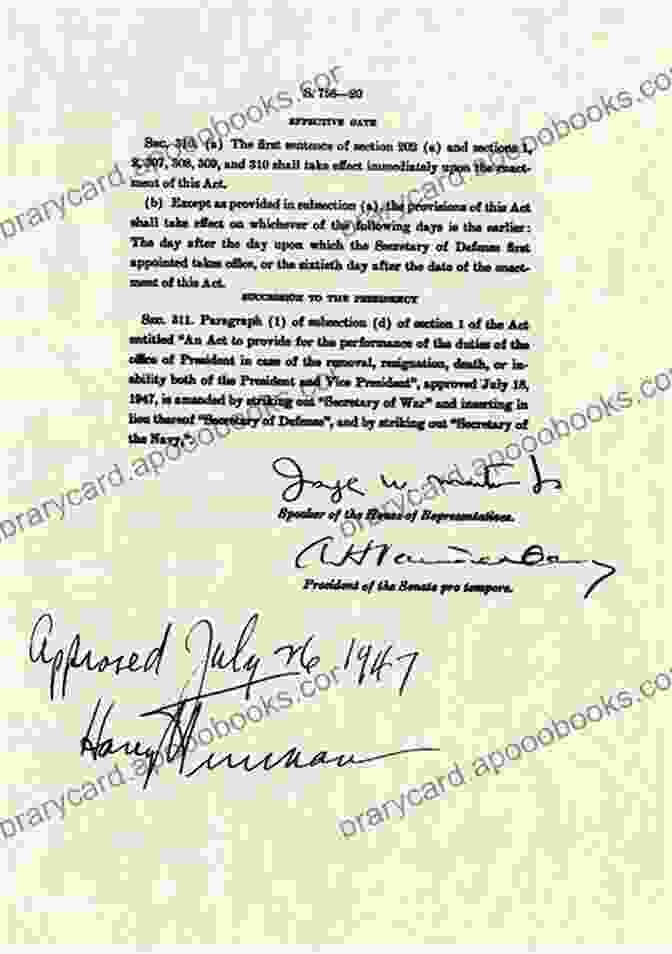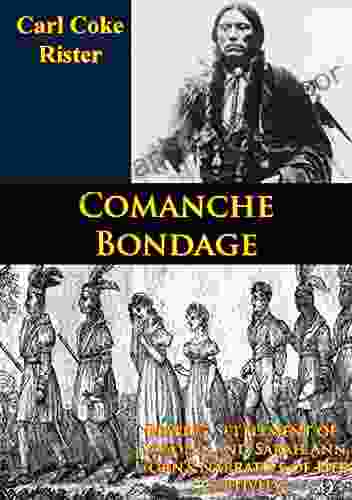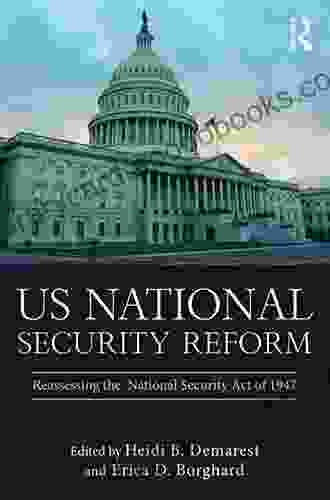Reassessing the National Security Act of 1947: A Comprehensive Guide to the Evolution and Impact of US Security Policy

The National Security Act of 1947 (NSA 1947) stands as a pivotal moment in the shaping of the United States' national security architecture. Enacted in the aftermath of World War II, the act established a framework that has profoundly influenced the way America approaches its security challenges for over seven decades. This article aims to delve into the origins, key provisions, and lasting impact of the NSA 1947, providing a comprehensive guide for understanding its significance in the realm of US security policy.

5 out of 5
| Language | : | English |
| File size | : | 1284 KB |
| Text-to-Speech | : | Enabled |
| Screen Reader | : | Supported |
| Enhanced typesetting | : | Enabled |
| Word Wise | : | Enabled |
| Print length | : | 224 pages |
| Hardcover | : | 264 pages |
| Item Weight | : | 15.2 ounces |
| Dimensions | : | 5.5 x 0.75 x 8.75 inches |
Origins and Context
The National Security Act of 1947 emerged from the crucible of global conflict and the dawn of the Cold War. World War II had exposed the weaknesses of the United States' pre-war security apparatus. The lack of a unified command structure, fragmented intelligence capabilities, and inadequate preparedness left the nation vulnerable to threats both foreign and domestic.
In the aftermath of the war, President Harry S. Truman appointed a special committee led by James Forrestal, the former Secretary of the Navy, to assess the nation's security needs. The committee's report, issued in May 1947, became the blueprint for the National Security Act.
Key Provisions
The National Security Act of 1947 introduced several key provisions that transformed the US security landscape. Among its most significant provisions were:
Establishment of the National Security Council (NSC)
The NSC serves as the president's principal advisory body on national security matters. It is composed of the president, vice president, secretary of state, secretary of defense, and other senior officials. The NSC plays a crucial role in coordinating national security policy and advising the president on strategic decisions.
Creation of the Central Intelligence Agency (CIA)
The CIA was established as the nation's central intelligence arm, responsible for gathering and analyzing intelligence from around the world. The CIA's role has evolved over time, but it remains a key player in providing the president and other senior policymakers with the information they need to make informed security decisions.
Establishment of the Department of Defense (DoD)
The DoD consolidated the Army, Navy, Air Force, and Marine Corps into a single unified command under the leadership of a secretary of defense. This move aimed to streamline military decision-making and improve coordination among the different branches of the armed forces.
Impact on US Security Policy
The National Security Act of 1947 had a profound impact on the conduct of US security policy. The act:
Centralized National Security Decision-Making
The establishment of the NSC centralized national security decision-making under the president. This gave the president greater control over security policy and ensured that decisions were made with a comprehensive understanding of all relevant factors.
Improved Intelligence Capabilities
The creation of the CIA significantly enhanced the United States' intelligence capabilities. The CIA provided the president and other policymakers with timely and accurate information about threats to national security, enabling them to make better-informed decisions.
Strengthened Military
The consolidation of the armed forces under the DoD improved the efficiency and effectiveness of the US military. The creation of a unified command structure streamlined decision-making and facilitated the development of more cohesive military strategies.
Containment of Communism
The National Security Act of 1947 played a key role in the development of the US policy of containment during the Cold War. The act provided the framework for the Truman Doctrine, which committed the United States to supporting free nations threatened by Soviet expansionism.
Criticisms and Legacy
Despite its significant impact, the National Security Act of 1947 has not been without its detractors. Some critics argue that the act concentrated too much power in the hands of the president and the military-industrial complex. Others have pointed to the CIA's checkered history of covert operations and intelligence failures.
Notwithstanding these criticisms, the National Security Act of 1947 remains a foundational document in the history of US security policy. Its provisions have shaped the way the United States approaches national security for over 70 years. The act continues to be a subject of ongoing debate and analysis, a testament to its enduring legacy.
The National Security Act of 1947 stands as a watershed moment in the evolution of US security policy. Its key provisions have centralized decision-making, enhanced intelligence capabilities, strengthened the military, and laid the foundation for the containment of communism during the Cold War. While it has not been without its critics, the National Security Act of 1947 remains a significant touchstone in the study of national security policy and a testament to the enduring challenges of safeguarding the United States in the face of evolving threats.
5 out of 5
| Language | : | English |
| File size | : | 1284 KB |
| Text-to-Speech | : | Enabled |
| Screen Reader | : | Supported |
| Enhanced typesetting | : | Enabled |
| Word Wise | : | Enabled |
| Print length | : | 224 pages |
| Hardcover | : | 264 pages |
| Item Weight | : | 15.2 ounces |
| Dimensions | : | 5.5 x 0.75 x 8.75 inches |
Do you want to contribute by writing guest posts on this blog?
Please contact us and send us a resume of previous articles that you have written.
 Book
Book Novel
Novel Page
Page Chapter
Chapter Text
Text Story
Story Genre
Genre Reader
Reader Library
Library Paperback
Paperback E-book
E-book Magazine
Magazine Newspaper
Newspaper Paragraph
Paragraph Sentence
Sentence Bookmark
Bookmark Shelf
Shelf Glossary
Glossary Bibliography
Bibliography Foreword
Foreword Preface
Preface Synopsis
Synopsis Annotation
Annotation Footnote
Footnote Manuscript
Manuscript Scroll
Scroll Codex
Codex Tome
Tome Bestseller
Bestseller Classics
Classics Library card
Library card Narrative
Narrative Biography
Biography Autobiography
Autobiography Memoir
Memoir Reference
Reference Encyclopedia
Encyclopedia Bienvenu Mavakala
Bienvenu Mavakala Kamenie Lakhan
Kamenie Lakhan Amy Siskind
Amy Siskind Marcus O Dair
Marcus O Dair Chris Edwards
Chris Edwards Tobias Zoporowski
Tobias Zoporowski Ken Chan
Ken Chan Judd Apatow
Judd Apatow Michael Wynn
Michael Wynn Amanda Frey
Amanda Frey Tim Furniss
Tim Furniss Hindol Sengupta
Hindol Sengupta Andre Norton
Andre Norton Amelia J Wilson
Amelia J Wilson Ann Hood
Ann Hood Frederic Tuten
Frederic Tuten Joan S Case
Joan S Case Caroline Fredrickson
Caroline Fredrickson Amy J Heineke
Amy J Heineke Ian Shapiro
Ian Shapiro
Light bulbAdvertise smarter! Our strategic ad space ensures maximum exposure. Reserve your spot today!

 Holden BellUnveiling the Secrets of the 27 Liberal Party: A Comprehensive Guide by Sir...
Holden BellUnveiling the Secrets of the 27 Liberal Party: A Comprehensive Guide by Sir...
 Douglas PowellBeales Settlement Of Dolores And Sarah Ann Horn Narrative Of Her Captivity: A...
Douglas PowellBeales Settlement Of Dolores And Sarah Ann Horn Narrative Of Her Captivity: A... Efrain PowellFollow ·11.6k
Efrain PowellFollow ·11.6k Dashawn HayesFollow ·3.9k
Dashawn HayesFollow ·3.9k Desmond FosterFollow ·5.8k
Desmond FosterFollow ·5.8k Beau CarterFollow ·7.5k
Beau CarterFollow ·7.5k Jedidiah HayesFollow ·8.6k
Jedidiah HayesFollow ·8.6k Raymond ParkerFollow ·6.3k
Raymond ParkerFollow ·6.3k Gerald BellFollow ·4.7k
Gerald BellFollow ·4.7k Junot DíazFollow ·7.3k
Junot DíazFollow ·7.3k

 Roald Dahl
Roald DahlImmerse Yourself in a Mesmerizing Tapestry of Creativity:...
Prepare to be captivated by "Spectra," an...

 Clarence Brooks
Clarence BrooksUnleash Your Inner Taylor with Red Piano Vocal Guitar:...
Embrace the Red Era...

 Jeffrey Hayes
Jeffrey HayesUnlock Your Child's Academic Potential: A Comprehensive...
In today's rapidly changing...

 William Golding
William GoldingBrave Elizabeth: A Captivating Tale of Resilience and...
Immerse Yourself in a Riveting Historical...

 Curtis Stewart
Curtis StewartUnveiling the Heartfelt Melodies of Taylor Swift: A...
Step into the enchanting world of Taylor...
5 out of 5
| Language | : | English |
| File size | : | 1284 KB |
| Text-to-Speech | : | Enabled |
| Screen Reader | : | Supported |
| Enhanced typesetting | : | Enabled |
| Word Wise | : | Enabled |
| Print length | : | 224 pages |
| Hardcover | : | 264 pages |
| Item Weight | : | 15.2 ounces |
| Dimensions | : | 5.5 x 0.75 x 8.75 inches |









